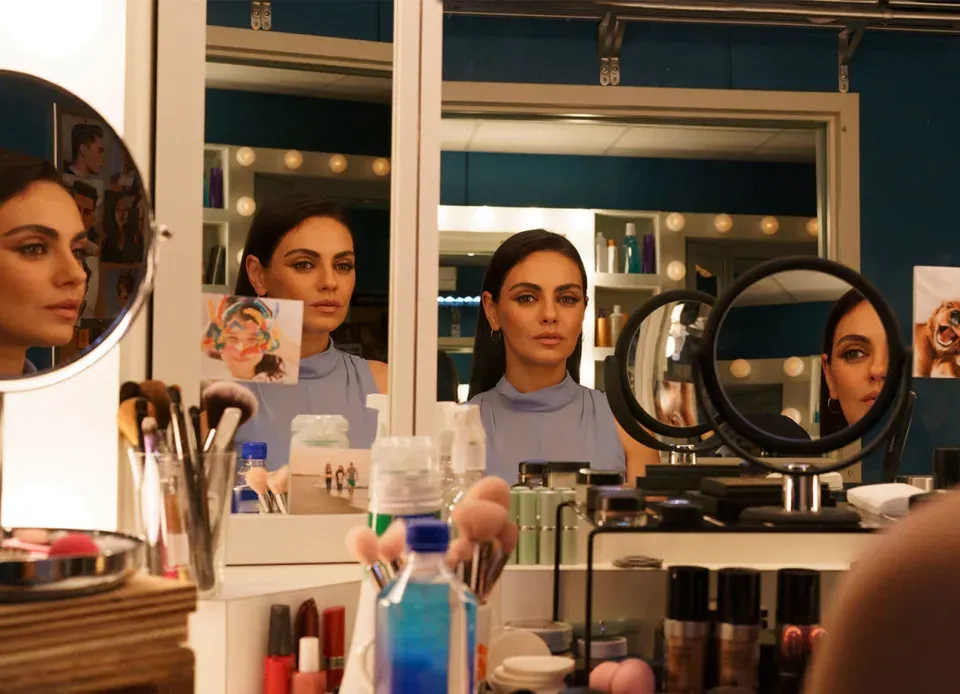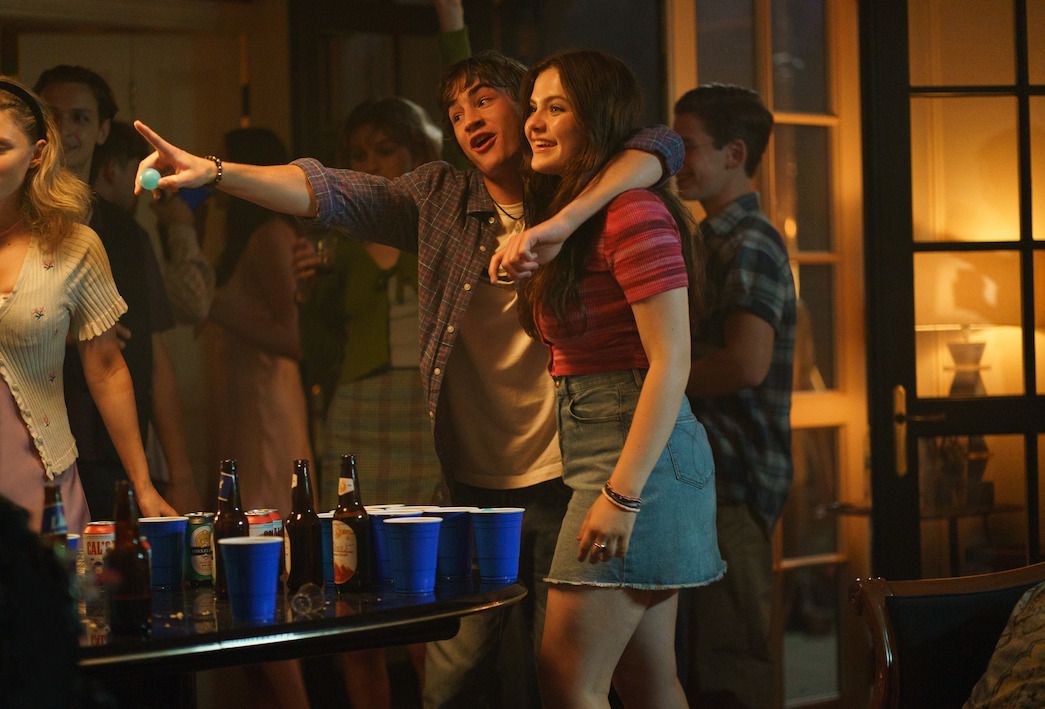By Nadia Ferraris, Third Year, Sociology and Social Policy
*Content Warning: mentions of rape, death, and gun violence.*
Who are we when no one is watching us? Ani Fenelli (Mila Kunis), like many of us, doesn’t know.
Luckiest Girl Alive (2022) begins with Ani’s obsessive thoughts about her appearance and her reputation. She’s a magazine editor who squats in her boss’ office to feel a few minutes of importance and an exercise junkie who fakes a full belly after a meal. She’s also engaged to a rich man (Finn Wittrock) for whom she has shaped her character to please.

This is a façade she has managed to keep up for most of her adult life until it abruptly comes to an end when shopping for cutlery wedding gifts. In an unexpected turn of events, the knives she is holding start dripping with blood, and the viewer is no longer in reality but in the depth of Ani’s consciousness.
This begins the unravelling of her trauma; Ani is a survivor of a school shooting of which she was also accused of being an accomplice, although nobody knows the whole truth. The real untold story is complex, involving violent sexual abuse and rape.
Throughout the telling of her experiences, the character comes to understand that her personality is built to please others and that her past has been holding her back from being her true self.

This movie is R-rated, and for good reason. Although the storyline, taken from the 2015 novel Luckiest Girl Alive by Jessica Knoll, is intriguing, I do not believe it justifies the film’s unreal amount of triggering content. Especially as Netflix has (as of yet) not included any content warnings with the movie.
While it is important to face the realities of rape and of death, we live in a world where a large number of women have been sexually abused. Therefore, watching a girl’s face for a substantial amount of time whilst she is raped again and again is painful and, not to mention, potentially retraumatizing.
This does not make it a terrible movie, but it does definitely need a trigger warning before you watch it.

The way this movie makes your toes curl and your insides turn upside down are, in a way, a testament to the portrayal of teenage Ani by young actress Chiara Aurelia. Her talent doesn’t seem to be recognized in the reviews of this movie, which have been overwhelmingly negative.
The pain and horror I felt for the character's traumatic past were, however, mitigated by the poor directing choices made by Mike Barker for the older Ani Fenelli. The portrayal of her felt like a strange mix of characters from How To Lose a Guy in 10 Days (2003) and the Netflix series You (2018-).

Ani Fenelli isn’t relatable to the audience, and her personality doesn’t tie well with her past life depicted in the flashbacks. I am unsure whether to critique Mila Kunis’s performance for this, as I think the script and the style of the film are more to blame.
It isn’t a movie I would recommend to any reader, nor one that has made a particularly positive impact on me. It may trigger many viewers and leave you feeling confused as to whether one good young actress's performance was worth 116 minutes of your time.
For me, this film will inevitably fall into the flop pile.
Featured Image: Netflix, courtesy of IMDB
Do you think Netflix should provide trigger warnings for its content?







